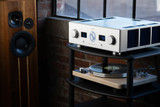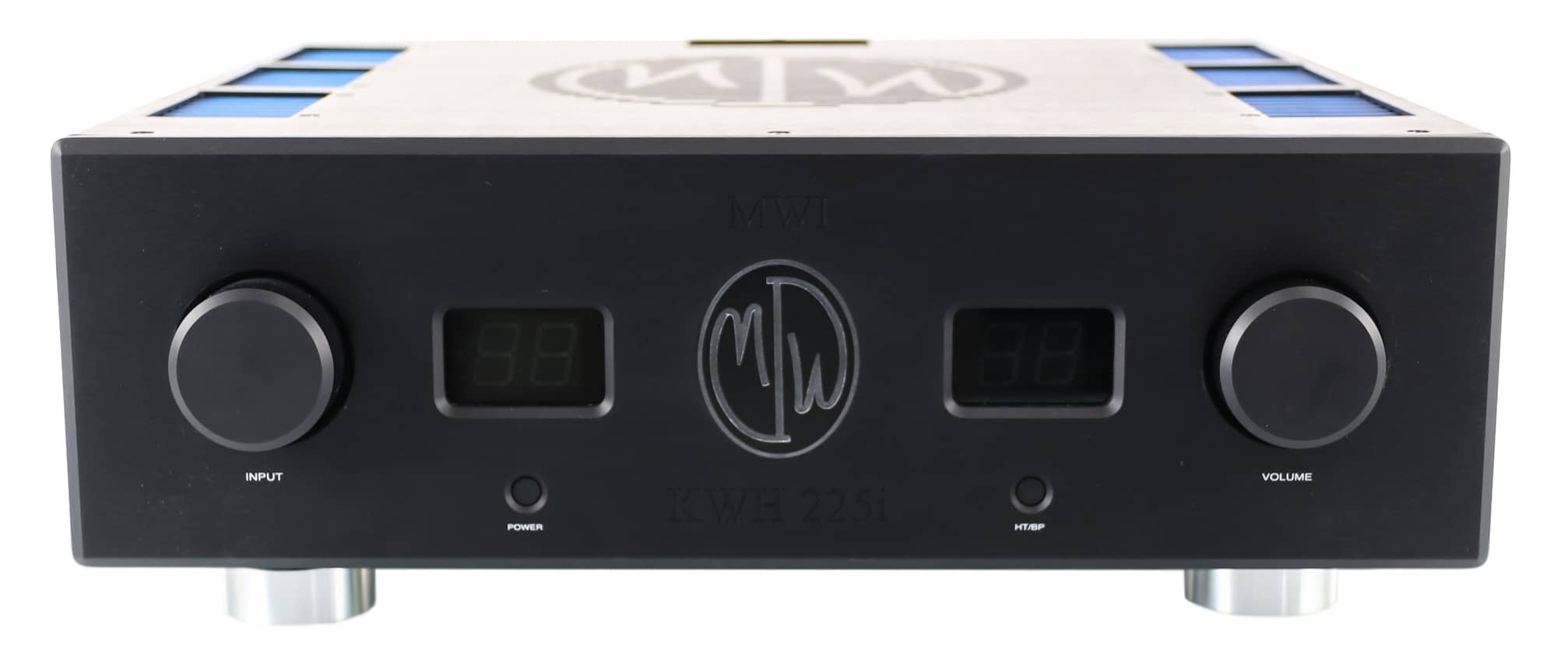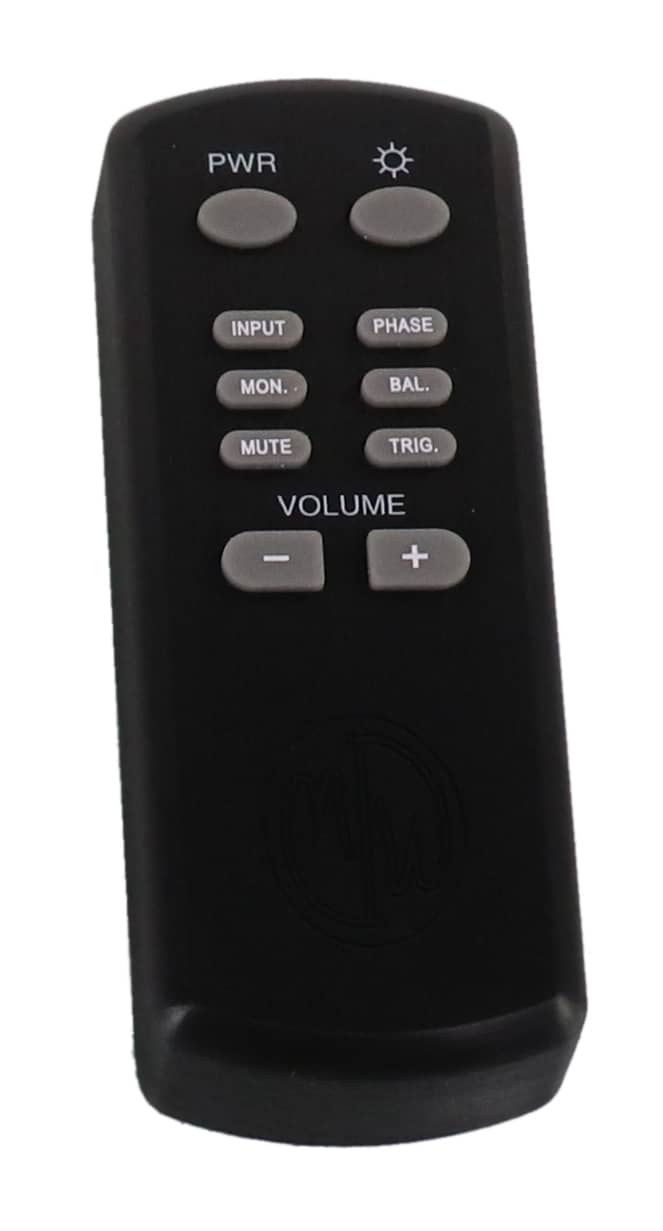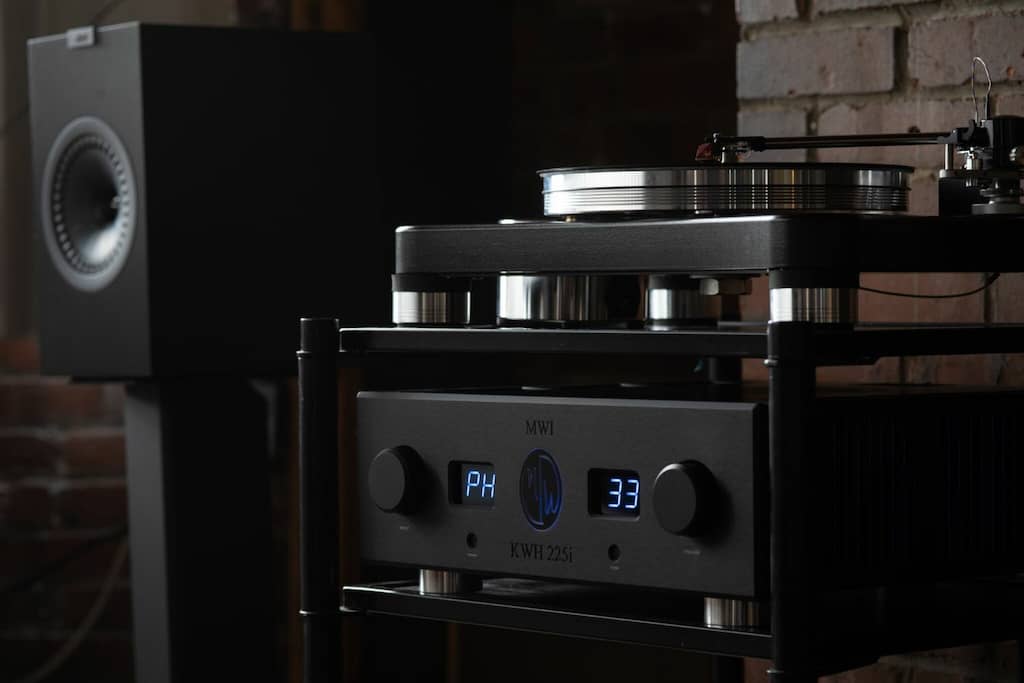TMR Exclusive Review: Modwright KWH 225i Tube Hybrid Integrated Amplifier

It could be said of any hobby that a large portion of the discourse surrounding it will be reserved for arguing over which approaches are the best. Car enthusiasts will debate over front wheel versus rear wheel designs, and guitar players will advocate for different woods or pickup designs to achieve different tones.
As audio enthusiasts, I doubt we will ever run out of topics to debate. CD versus vinyl and tubes versus solid-state come to mind, not to mention the tradeoffs inherent in any number of letters assigned to describe amplifier output types. So, whenever a client asks me “should I get an integrated amplifier or focus on separates?”, the answer is not always so simple.
I have long been an advocate for building high-performance systems around integrated components. In fact, I would state that a well-built integrated amplifier is one of the absolute highest values in audio. This isn’t exactly a hobby known for its affordability, and by significantly reducing component and cable costs an integrated amplifier allows for many people to dedicate more funds to speakers and sources – an approach which I myself take in building my own system. I won’t pretend to argue that integrated amps aren’t something of a compromise in certain respects, but at the end of the day, what is the real core of this hobby if not simply managing those compromises? Enter the Modwright KWH 225i stereo tube hybrid integrated amplifier.

It’s been advocated by many that combining a tube-based input stage with a solid state output is one of the most effective ways of building an amplifier with as few compromises as possible. The input stage uses tubes to shape the incoming sound with excellent tonal character and harmonic richness, and the solid state output provides linear frequency extension with great control and inner detail – especially in the bass region. Many big-name players in the industry have used this approach to great success in recent years, and in my opinion, by doing so they’ve created some of the best sounding amplifiers I’ve heard at any price point. So, when I was offered an opportunity to test out the Modwright KWH 225i I was eager to test the limits of its potential. Much to my excitement, I found very few.
Setup

The first thing I noticed about the Modwright 225i was just how solid the remote feels. It’s not a skinny plastic remote like the ones that come with TVs these days. It’s a significant chunk of machined metal that looks solid enough to be backed over by a pickup truck and keep working (although I wasn’t about to test that theory). The rear panel of the unit sports one pair of balanced XLR and four pairs of RCA inputs, including a home theater bypass input. There is also space for an optional phono stage addition, though my sample unit was not equipped with this feature.
Setup was simple and straightforward (another benefit of integrated amplifiers): just connect your sources and speakers and you’re good to go. Once the unit was warmed up and ready, I started familiarizing myself with the controls.
One welcome feature that I appreciated immediately was the LED volume display. My own personal integrated amplifier has no display, and the indicator dot on the volume knob is nearly impossible to make out from my listening position in the low-light conditions of my room. Having a clearly visible numerical readout was a downright luxury for me, and it took a lot of the guesswork out of finding the right volume levels.
Listening
Everyone has their own tastes in this hobby, but I find that the amps I tend to gravitate towards, whether tube or solid state, are Class A/B designs with as little global feedback and as many Class A watts as possible. I am also a big advocate for newer hybrid Class D designs in the right application, but that’s a topic for another time.
It was apparent from the first few seconds of listening that the 225i maintained a grip and control over my MartinLogan Impression ESL 11A speakers that I have only heard from a few other amplifiers – all of them much more expensive standalone power amps. The noise floor was low… like “separates” low.

My listening session began with a bit of music from a modern young British guitar sensation. I can’t seem to turn around lately without bumping into a Tom Misch track. In fact, I went to a friend and longtime colleague’s mountain wedding a couple weekends ago and they instructed the DJ to play the entire Geography album front to back during the dinner hour. Now, that’s an endorsement.
I decided to load up the same album for my initial listening and ended up playing the full album myself, which is something I’m rarely able to find time to do these days. I realized that I had made it more than halfway through without taking any notes, and it wasn’t until Poppy Ajudha’s extremely present-sounding vocals during the track “Disco Yes” that I realized just how engaged with the music I had become. I wasn’t expecting to hear quite the level of inner detail I was hearing, but as I mentioned earlier, the noise floor was impressively low, and this amplifier built upon that ground floor and displayed every bit of information with precision and intention.
Next, I decided to spend some time digging into albums that I had purchased on Record Store Day this year that I hadn’t gotten a chance to listen to quite yet. First up was Steely Dan’s Grammy Award-winning Two Against Nature, which was released for the first time on vinyl just this year. Instead of listening to this one front to back, I decided to jump to side B right away. “Janie Runaway” and “Almost Gothic” were as exceptional as I would expect, but it was “Jack of Speed” where the amp really showcased its ability to create pinpoint images. The palm-muted guitar riffs were as tight and focused as I had ever heard them sound, and the bass was smooth and controlled. The soundstage was also much deeper than I was accustomed to with my own KT150-based integrated amp. And did I mention the noise floor was low?

After “The Dan,” I wrapped up my listening session with some of my favorite songs that I had discovered previously at Denver’s Rocky Mountain Audio Festival.
As a side note, I had actually just learned earlier in the day that the show had been canceled, and not just for this year, but for the foreseeable future. It was definitely an unexpected piece of news, and one that I took harder than I expected I would. RMAF was my favorite weekend of the year. A good friend of mine and former colleague (from my “brick-and-mortar days”) and I would go on Sunday every year, and we would catch up with former vendor reps that we hadn’t seen since the year before. Each year, I would also create a playlist of my favorite demo tracks we heard, and listen to them when I got home. It was a ritual that I will miss dearly.
Of all the amazing tracks I discovered over the years, one of my favorites is “Given Road” by Over the Rhine. Listening now, everything on this track was just clicking, the vocals were present and natural sounding, and the soundstage was expansive and the imaging within it precise. And the noise floor? Yeah, you guessed it…
Conclusion
This turned into an emotional experience, having revisited some of my favorite memories from RMAF, with the Modwright showing itself to be the perfect amplifier for my nostalgia-infused listening. Ultimately, I found that the 225i sounded like the least compromised integrated amplifier that I’ve had the opportunity to evaluate in my system. It’s harmonically rich without the thickness of other designs I’d heard. It was tight, fast and accurate without sounding thin, and most importantly it allowed me to relax and enjoy whatever type of music I threw at it, regardless of recording quality.
For those looking to invest in an extremely well-engineered, hand built integrated amplifier that will last a lifetime while providing enough power for just about any loudspeaker on the market, the Modwright KWH 225i is an enormous value and an undeniable contender for my favorite integrated, regardless of price.
Associated Equipment:
MartinLogan Impression ESL 11A Speakers
Rel Carbon Special Subwoofers
Pro-Ject 2xperience SB Turntable
Musical Surroundings Nova III Phono Preamp w/ Linear Charging Power Supply
Bluesound Node 2i
Primaluna Evo 100 DAC
Audioquest Niagara 5000 Power Conditioner

